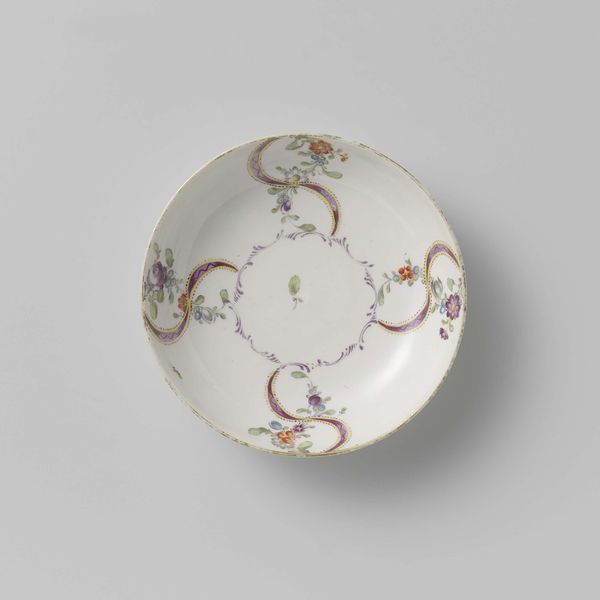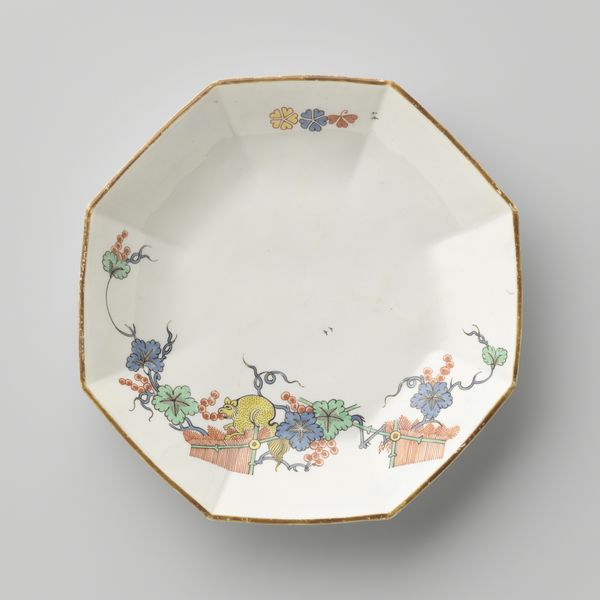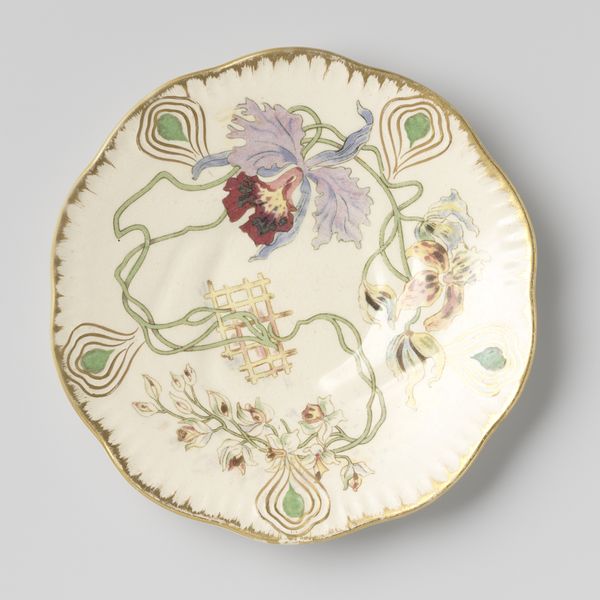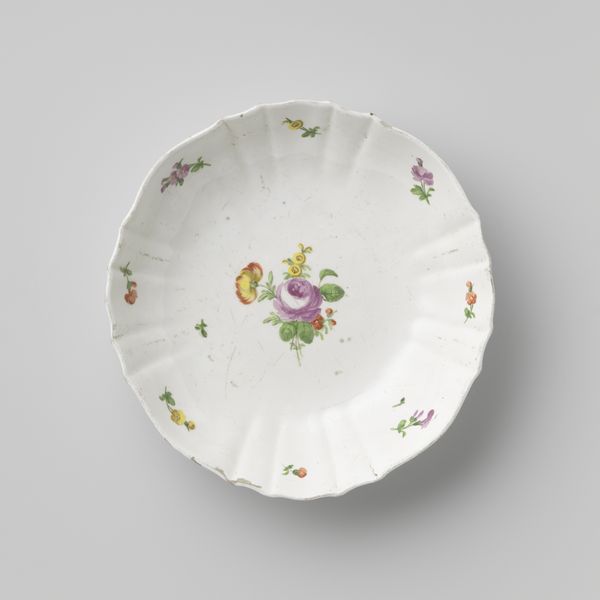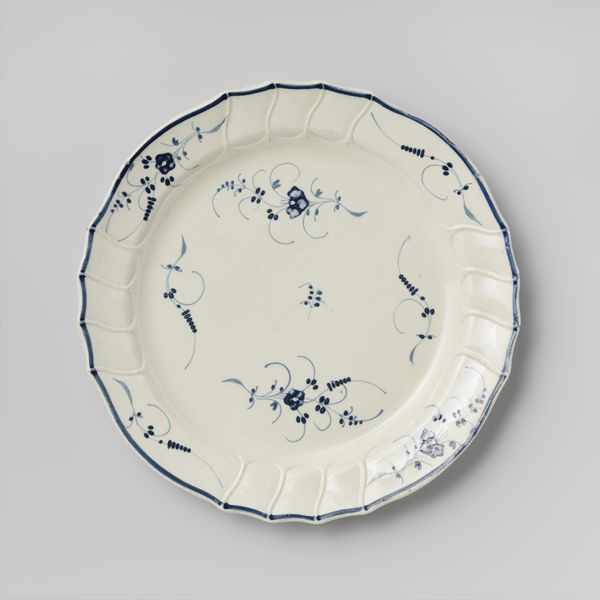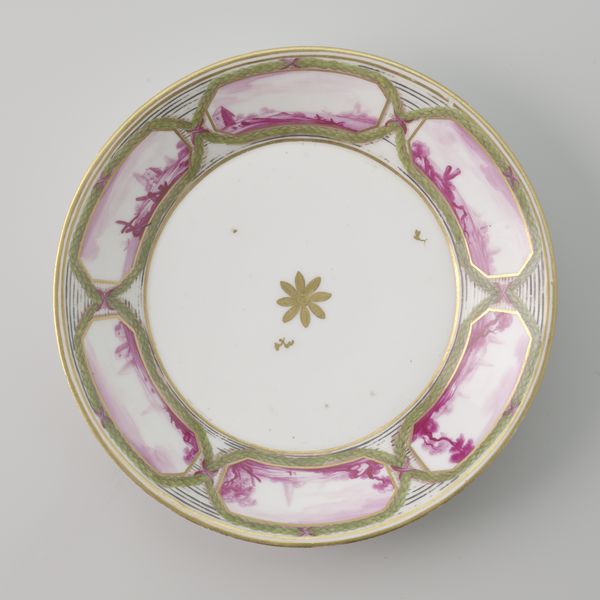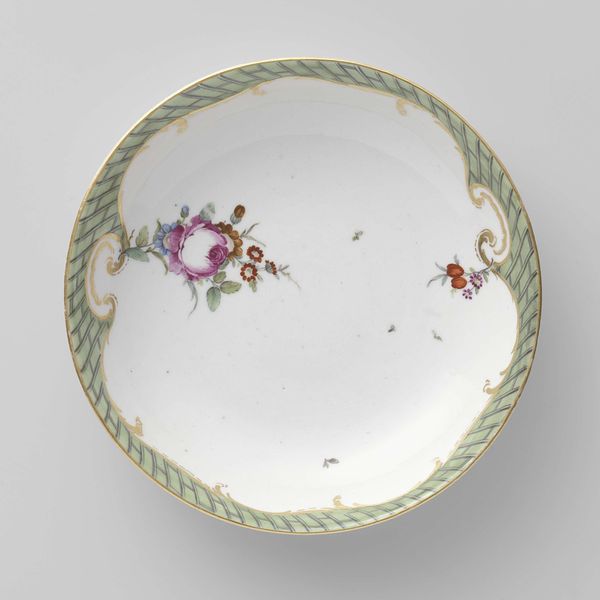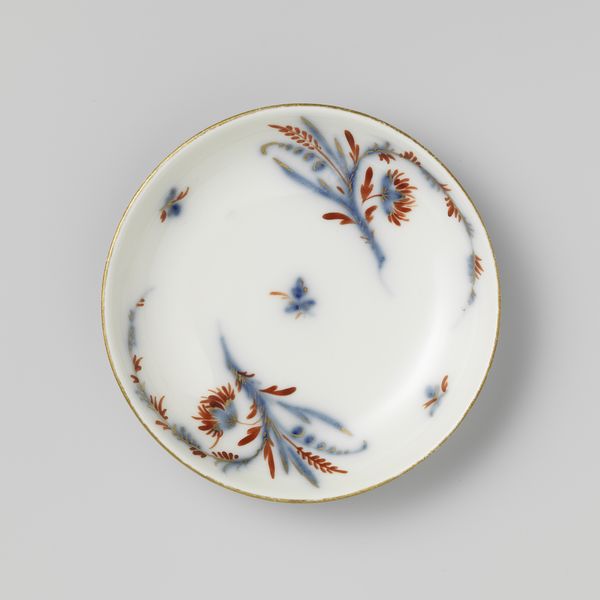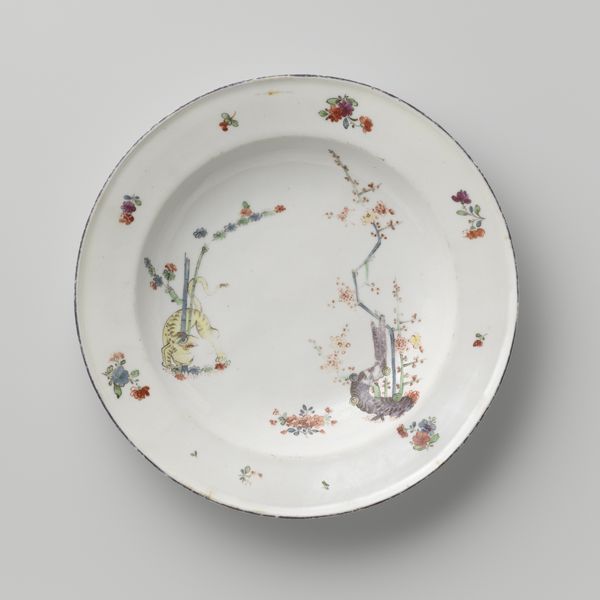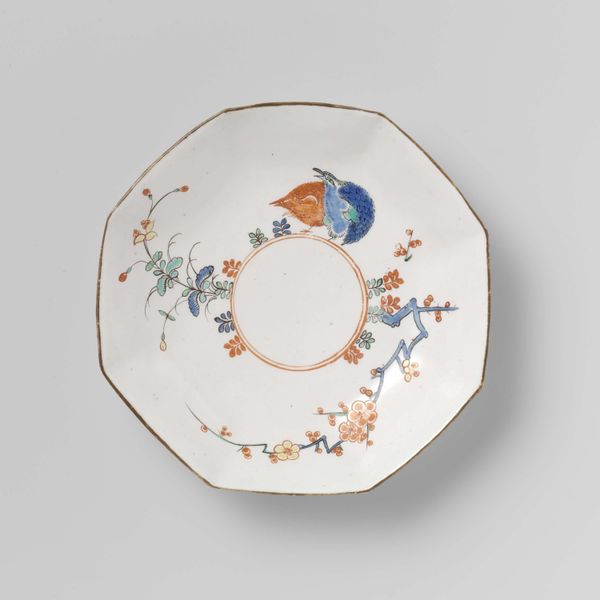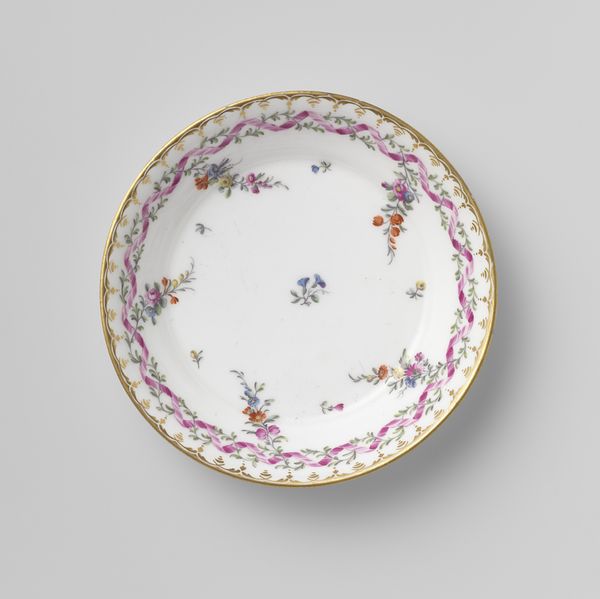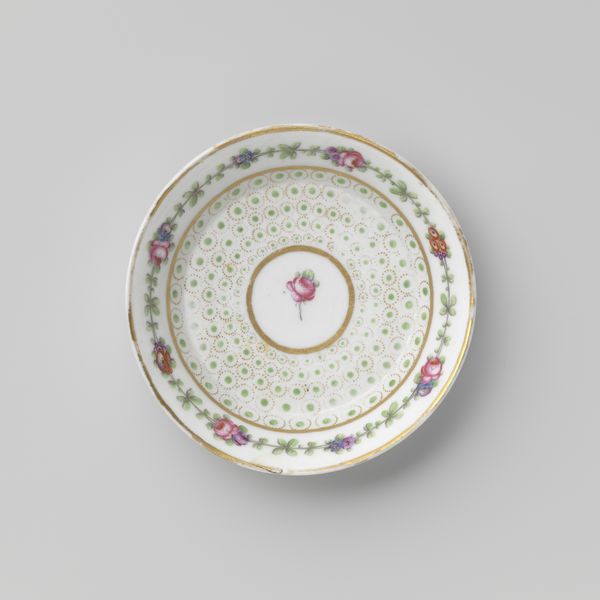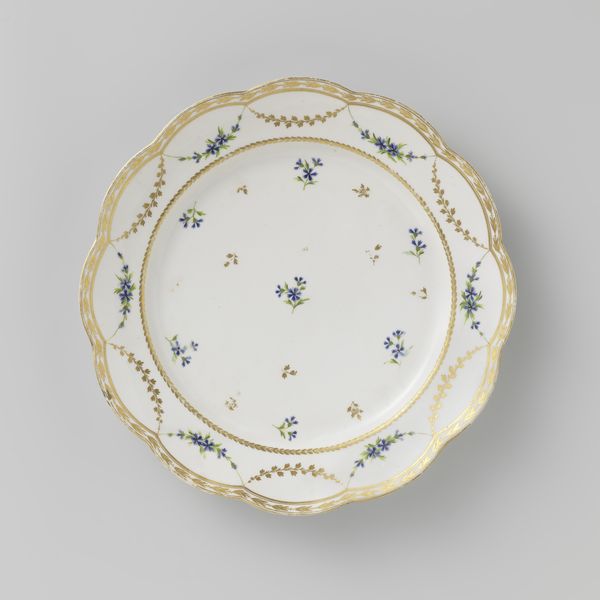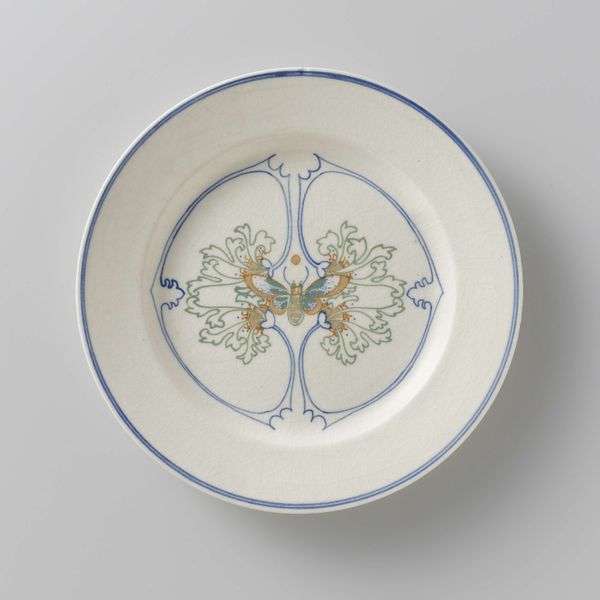
ceramic, watercolor
#
ceramic
#
watercolor
#
stoneware
#
geometric
#
ceramic
#
decorative-art
Dimensions: height 2.8 cm, diameter 14.4 cm
Copyright: Rijks Museum: Open Domain
Curator: Ah, here we have a charming piece from the N.V. Plateelbakkerij Ram: a polychrome-painted plate in watercolor, dating circa 1920-1922. It’s rather delightful, isn't it? Editor: It's simple, almost childlike, in a refreshing way. It makes me think of a pale spring day—but the lines! They look hasty. Was that the intention, I wonder? Curator: Well, examining it through a materialist lens, the swift execution likely points to production pressures. The Plateelbakkerij Ram was catering to a market hungry for decorative ceramics in the interwar period, so time was money, I imagine. This watercolor technique is probably more efficient than intricate glazing work. Editor: Absolutely, although I suspect it would take a sure hand to get it this simple - and a deft touch. It has an expressive quality; perhaps someone trying to break free from more traditional constraints? Those pastel washes, that light-colored earthenware feel rather unconfined! Curator: Yes, it has this lovely raw, almost 'unfinished' quality doesn't it, even though it’s complete. When you zoom into the composition you can appreciate how the geometric patterns play out over this unassuming circle to render a simple visual pleasure. Editor: Precisely. But this "simplicity" hides a network of industrial processes. Think of the sourcing of materials – clay, pigments, water. Labor—the forming of the plate, mixing the paints, training artists... and consider also transport! Then comes distribution and sale. It presents this simple moment, and disguises its underlying intricacy. Curator: Exactly - it represents a shift. As decorative arts opened themselves up to mass production they also had to shift from expensive precious wares, into more casual domestic items, suitable to the more austere social moods, especially given the post-war context of its origin. It’s now whispering a quiet decorative harmony across time! Editor: It really does encourage us to consider both what is seen and the unseen efforts woven into an ordinary piece. We rarely acknowledge all this. Curator: Indeed, it holds an echo, doesn't it, a murmur from another time which invites us into its material reality and asks us to appreciate its production past and to reflect on the social landscape and circumstances of its creation and ultimate purpose!
Comments
No comments
Be the first to comment and join the conversation on the ultimate creative platform.
